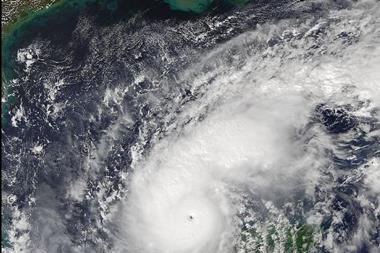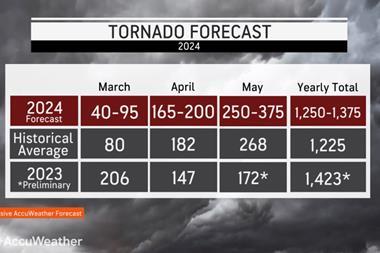“This performance is not of the standard that we would expect of a market that has both the heritage and quality of Lloyd’s and we are taking further actions,” says Lloyd’s chief
Another torrid year of catastrophes - including hurricanes in the US, a major typhoon in Japan and wildfires that scorched swathes of California - again saw claims far exceed premiums written by underwriters at Lloyd’s.
When taken together, (re)insurers operating in the Lloyd’s market reported a £1bn loss for 2018. While significant, the loss is only half of the £2bn deficit posted this time last year by the market, which has a history of booking strong earnings even in the face of significant catastrophe events.
But the last two years have been different. 2017 was the most expensive year ever for insurers, while 2018 was the fourth most costly, according to Swiss Re.
After 2017, insurers put up their prices by around 3.2% on renewing business, Lloyd’s reported today. But those rate hikes were not enough to offset an unexpectedly-costly year of catastrophes, which contributed to a total claims bill of £19.7bn.
As a result, the market’s combined ratio, a measure of claims relative to premiums, was 104.5% for 2018, although that was an improvement on the 114% reported this time last year.
“On the back of a second higher than average catastrophe claims year, Lloyd’s 2018 aggregated results have shown green shoots of improvement,” said newly-annointed Lloyd’s CEO John Neal.
Neal, who replaced Inga Beale in October last year, pointed to improved pricing, which helped push gross written premiums to £35.5bn for 2018 and a reduction in the market’s underlying loss ratio as causes for underwriter optimism.
Nevertheless, of 2018’s result, he noted: “This performance is not of the standard that we would expect of a market that has both the heritage and quality of Lloyd’s and we are taking further actions.”
“In particular, we have implemented stronger performance management measures which will remain an enduring feature of how we go about our business.”
He said this year’s plans had been “constructed on a more rigorous basis” after more than £3bn of underperforming business was axed as he warned that “inadequately performing” syndicates and classes of business would face continuous oversight.
“We expect these actions to deliver progressive performance improvement across the market in 2019 and 2020.”
The Lloyd’s result also suffered from a poor investment market in 2018 with investment returns of just £500mn, well below the £1.8bn it earned the year before.
Nevertheless, the market strengthened its unique capital structure, which includes the Central Fund, a vast capital pot that sits behind syndicates underwriting at Lloyd’s.
Lloyd’s total central assets grew by 8% to £3.2bn. Meanwhile assets within the market were up nearly 9% to £118bn.
Lloyd’s chairman Bruce Carnegie-Brown said of 2018’s loss: “Against a backdrop of global macro-economic instability, performance in the insurance sector continued to be affected by the tough underwriting and investment market conditions.”
“These were reflected in the Lloyd’s market’s 2018 results, which were impacted by above-average major claims activity, and the low return and volatile investment environment,” he continued.
“However, the result was underpinned by continued strengthening of the Lloyd’s market’s capital position and signs of improvement in underwriting performance.”




















No comments yet